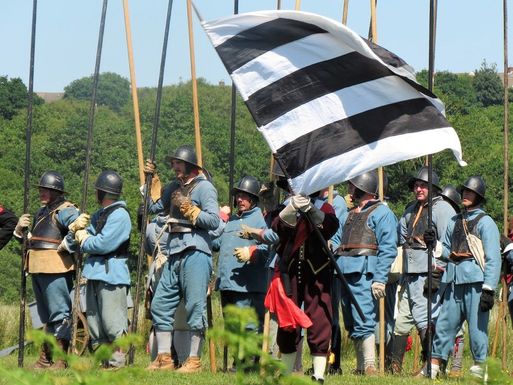
The English Pike is made of Ash and was between sixteen and eighteen feet long. The Ash shaft is tapered and balanced from where the pikeman held it to the end. A metal blade with a sharp point and edges is fixed at the tapered end, and long metal strips are placed down each side for about two to three feet. They are the ‘Cheeks’ or ‘Languet’s’ designed to stop the end being chopped off by cavalry.
In the early 17th century the pike was considered as the Queen of weapons. Pikemen would be used to defend vulnerable musketeers and caliver men from attack by cavalry. Until the invention of the bayonet, the pike was an invaluable weapon. Once the bayonet was introduced the musketeers were then able to defend themselves from attack.
The decline actually began at the end of the 16th century. Up to that time a body of foot soldiers had pikes, pole-arms and longbows, muskets or calivers (small, early muskets). In 1590 Queen Elizabeth declared that ‘All her archers were to be retrained as musketeers or caliver men’. There was no mention of the pike. The Pole-arm had become merely a badge of rank by the 17th century. By the 1640’s it was considered than an ideal proportion would be two shotte to one pike. The only thing that prevented this was the cost and time taken to produce the number of muskets required. By 1650 some regiments had up to six muskets to one pike.